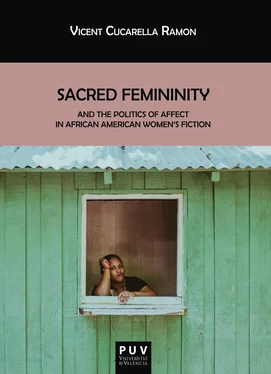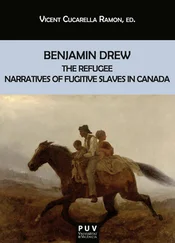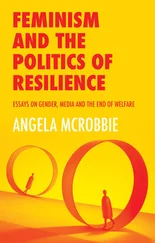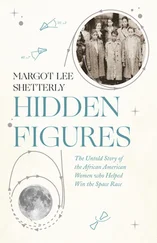As mentioned before, the novel has triggered heated debates over the dubious identity of Hannah Crafts herself. If Hannah Crafts was indeed a black fugitive female self, then The Bondwoman’s Narrative stands as the first novel ever written by a black woman and therefore her conception of spirituality would bring on black Christianity as the social and cultural matrix through which to empower and brandish her self-assertion and establish her literary output. Drawing broadly on the Bible, Crafts holds to her religious principles as a staunch Christian throughout the novel in order to shape her modeling of the black female self in the African American rhetorical tradition and, more precisely, in the African American jeremiad which stands as an intersection for Crafts to challenge America’s sin and to assert herself as a truly (African) American citizen who longs to live and participate in the Calvinist American society understood as the biblical “City upon a Hill”. Besides, Crafts’s conception of sacred femininity builds on the jeremiad rhetoric to create a nuanced conception of affect that salvages the subjectivity of black within and outside the African American community. A perfection that links her ideal sacredness with the national creed of the nation arguing for a specific conception of the sacred self-attuned to a feminist and aesthetic reading of Robert Bellah’s “civil religion”. In so doing, I demonstrate how Crafts’s novel holds a pioneering role in the African American literary canon since it acts as the forerunner of W.E.B. Du Bois’s double consciousness, as it is explained in The Souls of Black Folk , although explicitly based on a feminine reading of spirituality, for both texts share the attempt to shape an African American identity that partakes in the American ideals but with unique traits that make it different.
In Chapter 3, I move on to the twentieth century to look at Zora Neale Hurston’s third novel Moses, Man of the Mountain for this text persists in the legacy of black sacred femininity put in motion by Hannah Crafts. After contextualizing the African American Christianity especially within the Sanctified Church, about which Hurston herself fully write, I concentrate on the aesthetics of the sacred in this black female revision of the Bible’s famous episode. Building up on Hannah Crafts’s biblical enterprise, Moses, Man of the Mountain voices the nation’s downfall by also aestheticizing and building upon the African American jeremiad. However, and heeding Crafts’s promise of a new national dawn, of the three stages that the jeremiad contemplates, Hurston’s novel is firmly grounded on the second moment that focuses on the “criticism of present declension” (Howard-Pitney 8). Thus, the text presents sacredness for African American women as a poetics of healing and thereby it epitomizes Judylyn Ryan’s paradigm of growth, which is defined as a proactive way to conjure up Christianity so that it can serve black women to establish their subjectivity. Precisely, such paradigm addresses the necessity for an ontological shift in the reconfiguration of African American female subjectivity as the novel puts forward.
In the context of the Sanctified Church in the 20th century, Moses, Man of the Mountain ’s rhetorical complexity puts the black priestess center stage to bolster up a determinative theological and theoretical approach by conceiving a female protagonist as the leader of the black community. Though her leadership is openly challenged, Miriam, the priestess, unfolds a feminist reading of spirituality striving to unite the entire community. In so doing, Hurston cultivates a feminist vision of African American modes of spiritual perception that wield the rhetoric lament of the jeremiad to breed the politics of affect within the sacredness that unite black women on the whole. Miriam’s relevant role in the story brings the focus to the kaleidoscopic nature of spirituality that African American women have historically nurtured. Placing the figure of Moses in the middle of female sacred subjectivity aims to pave the way and show an example for black female leadership—and therefore public recognition—within the black community. Also, Moses, Man of the Mountain is Hurston’s literary rendition of the aesthetics of sacredness as a healing process considering the sociocultural view that her idiosyncrasy represented in the context of the Harlem Renaissance. However, Hurston is not content with portraying African American women’s spirituality as a simple source of good. Accordingly, through Miriam’s final surrender to the demons of power and religious tyranny, the author conveys and demands an ethical stand to the sacredness that black women need to cultivate. The novel’s final chaos and social turmoil help to elucidate Hurston’s message to include black female spiritual vindications in the reconfiguration of the nation within the aesthetics of black vernacular culture. So, besides contemplating religion as a source of social critique, in Moses, Man of the Mountain Hurston’s politics of recognition rely heavily on female affective bonds within the spiritual ethos of the nation.
Lastly, Chapter 4explores the role of Christianity in the twenty-first century through the eyes of Toni Morrison. Her ninth novel, A Mercy (2008), offers the possibility to look back to the primordial settings of the Christian creed of the United States. In this light, Morrison links the religious misreadings and mischiefs when they come to represent and allure the egalitarian ethos of a nation that yearned for social perfection in the eyes of God. The transcultural visions of the female characters that fill the novel bring another focus to the concept of sacredness both in contemporary America as well as in the origins of the nation. Thus, A Mercy re-contextualizes the last stage that the American jeremiad beholds—“a resolving prophecy that society will shortly complete its mission and redeem the promise” (Howard-Pitney 8)—, and is complicit with the idea that black Christianity has contrarily held out a sense of an unresolved prophecy. However, affect does figure notably for Morrison seems to contend that the affective bonds suffuse the imaginary power of sacredness and reveal the Christian to be harmful when adopted by the enticing Patriarchal system—Jacob as the American Adam—and by the dispossessed female subjectivities, more precisely through the figure of Florens—expelled from this supposed paradise as the biblical Eve. Hence, in A Mercy , religion becomes an aesthetic outlet that the author uses to sharply despise its ethos with regards to its power to heal and give comfort. In so doing, the Nobel laureate grows apart from the path of considering spirituality as a redemptory tenet that Crafts and Hurston envisioned. The wrenching intimacies of women’s pain in the novel signal the pitfall of the sacred message and exemplify how in a globalized era in which religious discourse seems to be associated to uncertainty and inequality, spirituality functions not as a “life-affirming ideology” (146), as Judylyn S. Ryan declares, but rather as a contested commodity that can even thwart the subjectivity of African American women.
The reversal of the last stage of the jeremiad rhetoric tradition manifests, all the more, the sedative shift from the aforementioned paradigm of growth that dominated the twentieth century to what I would call the paradigm of declension, in which religion should no longer be considered as the safety board that women need and, contrarily, it confirms the spirituality of the Africanist presence in US culture as “the return of the exceptionalist repressed” (57) in Thomas B. Byers’s words. Morrison’s novel rejects Christianity as a cultural tool from which to uphold a rehabilitated version of femininity. Although it uses religion as an aesthetic concept to build a narrative that can be aptly read taking into account the religious bigotry that has been so seldom spread around the US through three centuries, the ending of A Mercy leaves the future on hold and comes full circle since its re-reading of the American jeremiad links it with its initial condition of protest and denunciation though with an intradiegetic twist. What is more, Morrison’s change of heart with regards to the role of religion also dislodges how the affective bonds between women, as the only possible launching pad through which to heal themselves, are wiped away due to the poisonous embracement of the Christian message. Therefore, religion appears in A Mercy —analogous to what happens in the 21st century—as a conflicting cultural tenet rather than a source of wisdom and empowerment. That is to say, even as the last stage of the jeremiad foresaw, Christianity engulfs subjectivities and affects all the same.
Читать дальше












